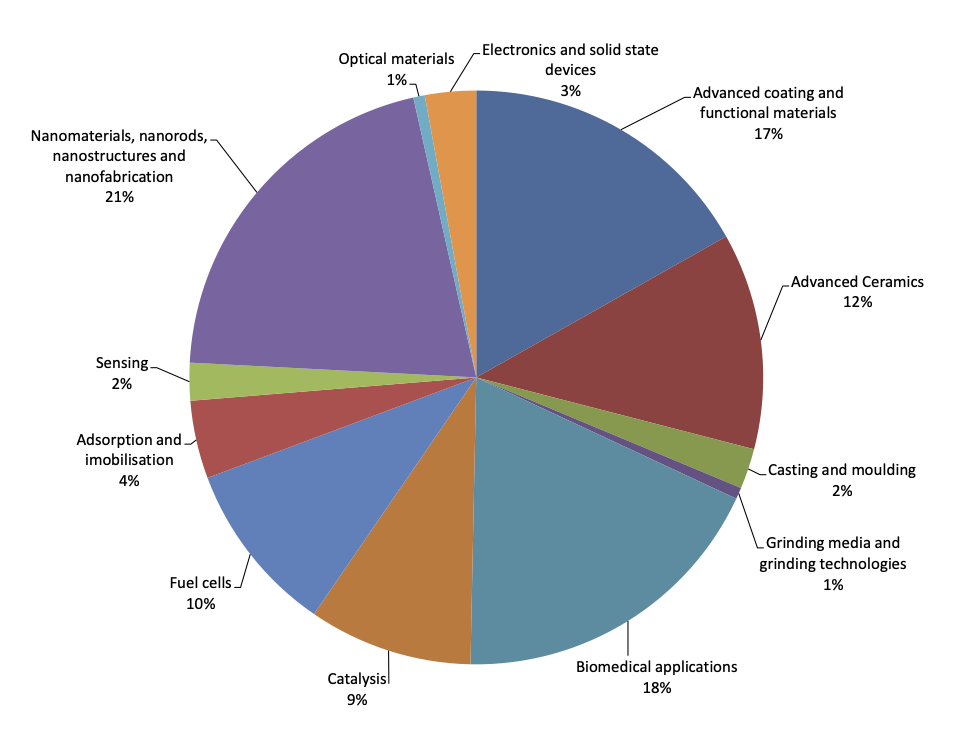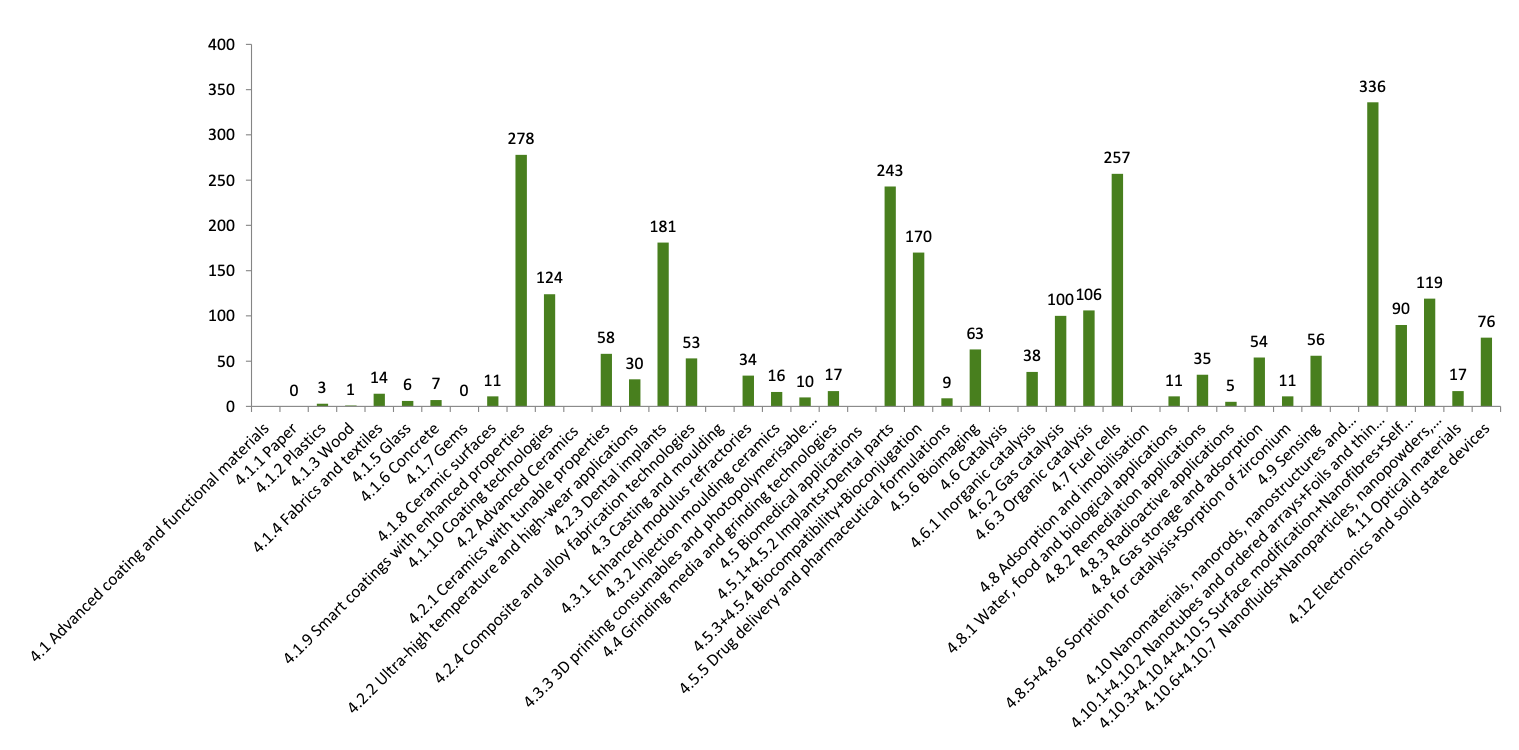The Zircon Industry Association annually identifies the most popular areas of research relating to zircon and its downstream derivatives.
Following a review of over 2,600 peer-reviewed papers published in 2019, it has been possible to identify these areas of research and make an informed assumption as to the likely potential for industrial application.
Specialists at Centro Ceramico, Bologna (Italy) carried out the literature search and categorised the papers into subject areas. Those areas with more than 30 publications were considered to have a high potential market demand, indicating that the interest of the scientific community is high and, therefore, the application might merit exploitation at an industrial level.
The most popular fields of zircon-related research were as follows:
General information on the use of zircon in these areas can be found in the ceramics and applications sections of our website.
Download pie chart (PDF) / Download bar chart (PDF)
The 2,639 papers in 2019 fell into the following areas of research:


The most popular field of research in 2019 was nanomaterials, nanorods, nanostructures and nanofabrication. 37% of the 545 papers were focused on industrial applications. These included:
The second most popular field of research in 2019 was biomedical applications. Of the 485 papers in this field, 49% focused on industrial applications. These included:
These have potential applications within the fields of dental and orthopaedic implants, bioimaging and tumour diagnosis.
The third most popular area of research was within the field of advanced coating and functional materials. 78% of the 444 papers in this area were focused on industrial applications, including:
These have potential applications in the fields of aerospace, automotive, power plants, petroleum industries, chemical processing and possible biomedical applications.
The next most popular area of research was advanced ceramics. Of the 322 papers in this area, 39% focused on industrial applications including:
These have potential applications in the fields of electronics, automotive, power plants, petroleum industries, chemical processing, biomedical and dental applications.
The area of zirconia use in fuel cells saw increased research interest this year with 42% of the 257 papers focused on industrial applications including ZrO2 and ZrO2 composites, anodes for solid oxide fuel cells and Zr compounds, ZrO2 and ZrO2 composites as electrolyte for solid oxide fuel cells. Importantly, these have potential applications in clean, efficient electricity generation, renewable fuel production and electricity storage. Catalysis was also an area that saw increased research interest in 2019 with 244 paper published, 72% of which focused on industrial applications. These included research on Zr compounds, ZrO2 and ZrO2 composites as catalysts and catalyst support for gas catalysis e.g. CO oxidation, methane decomposition, dehydration and dehydrogenation reactions, ethanol conversion, SO2 reduction and H2 production.
Other areas of research in 2019 included adsorption and immobilisation, electronics, cast moulding, sensing, optical materials as well as grinding media.
The four annual literature reviews between 2016 and 2019 offer an opportunity to identify research trends. Throughout this four-year period, the areas of advanced ceramics and biomedical research have remained popular areas of research, each with significant potential for industrial applications. While the areas of nanomaterials, nanorods, nanostructures and nanofabrication and advanced coating and functional materials have both grown in popularity based on the number of peer-reviewed publications.
The full literature review is available to ZIA members.
A summary of the results from the 2018 literature review can be downloaded here.
We aim to support the zircon market by responding to industry issues, by developing new applications for zircon and by enhancing existing applications for zircon wherever possible.